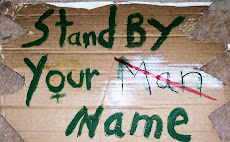I
find it interesting that opponents of Sweden’s
gender-neutral pedagogy, which I’ve long admired, accuse it of “promoting an
extremist feminist” and a “radical feminist” agenda. I’m wondering: What
exactly are extreme feminism and radical feminism? If feminism is the
elimination of patriarchy, then it seems to me that “extreme, radical feminism”
is a good thing. Would anyone oppose “extreme racial equality”? If so, your
white supremacy is showing.
What
could possibly be bad about children growing up free of gender stereotyping?
What is it that we find threatening about that? I was once discussing
gender-neutral names with a friend. She explained to me that she named her
children traditionally gendered names because she’d noticed that in preschools,
kids with gender-neutral names end up being called “Yuval-ben [boy-Yuval]” and “Yuval-bat
[girl-Yuval]”. I replied, “And supposing both Yuvals were boys. How would the
teacher then differentiate?” She answered, as expected, “By adding their last
initial”. Ding-ding! So why wouldn’t that solution be used for boy-girl pairs?
Why should gender even enter into the matter of having the same name as someone
else? Would we adults use “Yuval-ben / bat” in the workplace? In an adult education
setting? Of course not; it would be considered disrespectful and infantilizing.
So why are we tagging our kids? The only possible answer, and the one it always
comes back to, is that we adults feel the need to relate to boys and girls
differently.
A
critic of Sweden’s gender-neutral pronoun argued, “ It can be confusing for [children] to receive contradicting [sic] messages
about their genders in school, at home, and in society at large.” I see. So it’s not gender
neutrality you have a problem with; it’s that society is not uniform; different
environments send differing messages. And since those messages differ, the
default should obviously be to do things the old way, the way they were done
before women began questioning patriarchy. OK, got it. The critic goes on to
say, “Children ought to be allowed to mature
slowly and naturally. As adults we can choose to expand and change our gender
identities."
“Children
ought to be allowed to mature slowly and naturally.” Exactly. And as we’re born
asexual beings, it is incumbent upon us adults to preserve that asexuality, or
presexuality, as long as possible. That means not deluging our children with
hypergendered influences like Disney princesses and “action” heroes, and embracing
children who don’t
behave traditionally as per their sex.
As
for “As adults we can choose to expand and change our gender
identities” this reflects the fallacy that we choose our gender and sexual
orientation at some later point, after we have been taught the “proper” gender
expectations. Well, we’ve seen where that leads: To lives of frustration,
rejection, abuse, even suicide.
If
anything, it’s a gendered world that warps children’s development, not a
gender-neutral one. Ask any kid who doesn’t conform to the gender stereotypes what that’s like. And even
for gender-conforming kids, why set up boundaries and construct pigeonholes
that they’ll later just have to struggle against, in some cases at great
emotional cost? Why not let gender express itself from within the child,
instead of being dictated from outside?
In
its purest form, gender-neutral pedagogy requires no special materials or
training. What it “requires” is that we adults do precisely nothing vis-à-vis
gender. Whereas a gendered environment requires our active input, i.e.,
teaching our kids what’s “girl-like” and “boy-like”. We’ve got enough on our
hands educating our children to be thoughtful, contributing citizens, which is
not to be taken for granted. Why throw gender into the mix?


If we can ever get to the cultural recognition that all variations in sex identity and behavior are natural and even G_d given, then we can comfortably say "boy", "girl", and whatever words are chosen to identify natural differences. YYbYZhL
ReplyDeleteIdentity and orientation = inborn. Behavior = totally a social construct.
ReplyDelete